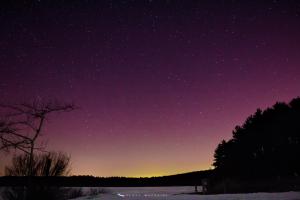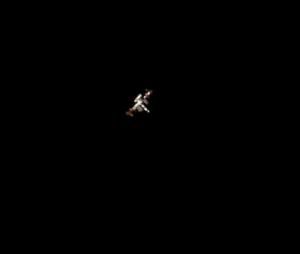Celebration of Space - August 26, 2022

An artists impression of the Orion Multi-Purpose Crew Vehicle on the way to the Moon as part of the Artemis Mission. Credit: NASA/Liam Yanulis
This coming Monday, August 29, 2022 at 8:33 am, the launch window will open for Artemis 1, the mission that will bring humans back to the Moon. Though this launch will not be a crewed mission, meaning no humans will be on board the crew capsule. The goal of Artemis 1 is to test the Orion Multi-Purpose Crew Vehicle, and the Space Launch System (SLS), which is NASA’s successor to the Space Shuttle. Artemis 1 will launch from the Kennedy Space Center and travel to the Moon. Once in lunar orbit, the Orion crew module will stay in orbit for six days. During this time it will make two close passes to the lunar surface. The first will come as close as 62 miles to the Moon, with the second coming within 60 miles distant. After which the capsule will return to Earth and re-enter the atmosphere. The overall Artemis 1 mission will last about one month, and will travel over 1.3 million miles. Of course NASA TV will be hosting several programs and live events to celebrate the launch. Check out the NASA TV schedule, then take a moment to learn about the Artemis mission goals. Now is the time to start getting excited about humanity returning to the Moon.
Over the past two weeks, the Frosty Drew Astronomy Team has been bombarded with questions about the Aurora Borealis, as well as some hate mail in regards to Frosty Drew not opening for such an amazing view of the Northern Lights. It is unfortunate that many of the popular media outlets hype up the Aurora Borealis to the level of impossible expectations, unless you reside in the Arctic Circle. Here are a few notes about the Northern Lights and observing them as far south as Southern New England.
A fantastic rule of thumb to keep in mind if looking to see the Aurora is: Do not travel South to see the Northern Lights! So many people show up at Frosty Drew Observatory with the goal of observing the Aurora. Frosty Drew is located about one mile’s distance from the Atlantic Ocean along the southern coastline of Rhode Island. Aside from Block Island, we are nearly as far south as it gets in Rhode Island. Though Frosty Drew has a great view of the night sky, we are way too far south for a good view of the Aurora.
The Aurora will not blow your socks off pretty much anywhere in Southern New England. The images that popular media outlets attach to their stories about the Northern Lights are images of what the Aurora looks like around the Arctic Circle, certainly not what it would look like anywhere in Southern New England, or all of New England for that matter. The Berkshires, and northern Cape Cod, may give you a slight red or green hue when looking very low on the northern horizon. Though anywhere south of that will pretty much only display the Northern Lights as faint grey bands that the average sky watcher would probably not even notice. Though long exposure photographs will capture the colors.
For the Aurora to be visible as far south as Rhode Island we would need a level 3 geomagnetic storm, that’s accompanied with a Planetary K-Index (Kp) of 7. Over the past two weeks, the Planetary K-Index never reached 7. But even at 7 we are talking about faint grey Aurora in Rhode Island very low over the northern horizon.
Frosty Drew will publish a notification on our Facebook if we feel that the Aurora will be visible over Southern New England, which will instruct readers to head north to catch a good view. In the past we have had visitors travel from Boston to see the Northern Lights at Frosty Drew. If those visitors traveled the same distance in the opposite direction, they would have seen a good display of the Lights. We often tell our visitors that the Franconia Notch region of New Hampshire is a good location for Aurora viewing due to numerous scenic overlooks that are higher on the ridge. With Solar Maximum moving in quite fast, we can expect an increase in geomagnetic storm activity, with some storms producing Kp 7 level activity. So keep an eye on our social media the next time you see CNN or Fox News explode about the Northern Lights.
The past two weeks have brought us stunning views of China’s Space Station – Tiangong passing over our region every night. Over the next few nights, Tiangong will depart the evening sky over our region until early October, but the International Space Station (ISS) will return in mid-September. Here are the remaining passes of Tiangong for the current cycle of evening passes:
Fri, Aug 26 at 8:27 pm, starting in the W, rising to 34°, heading towards the SE, and into orbital sunset
Sat, Aug 27 at 9:05 pm, starting in the WSW, rising to 14°, and into orbital sunset.
Sun, Aug 28 at 8:04 om, starting in the W, rising to 22°, heading towards the SSE
Though not as fabulous as many of Tiangong’s passes of late, these passes will be visible and will wrap up views of the station for the next couple of months. Though with two more Starlink launches happening before the end of August, we may end up having some fantastic passes of the new Starlink constellations. So get out and catch a view of Tiangong to wrap up your summertime satellite viewing.
- Author:
- Scott MacNeill
- Entry Date:
- Aug 26, 2022
- Published Under:
- Scott MacNeill's Columns




